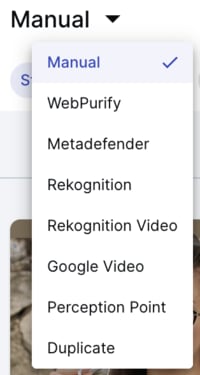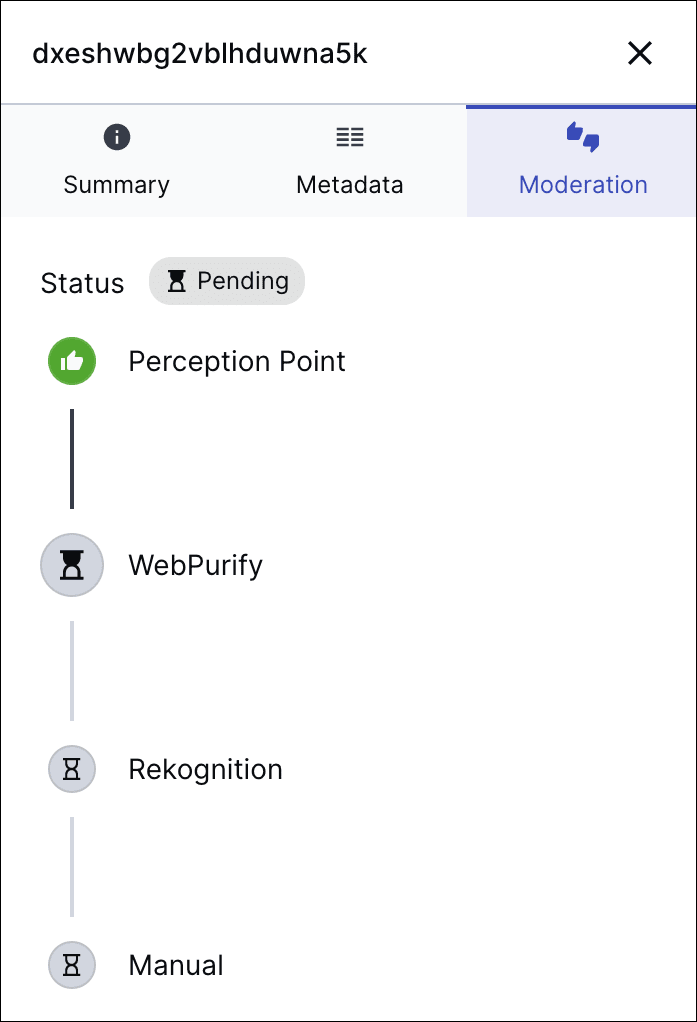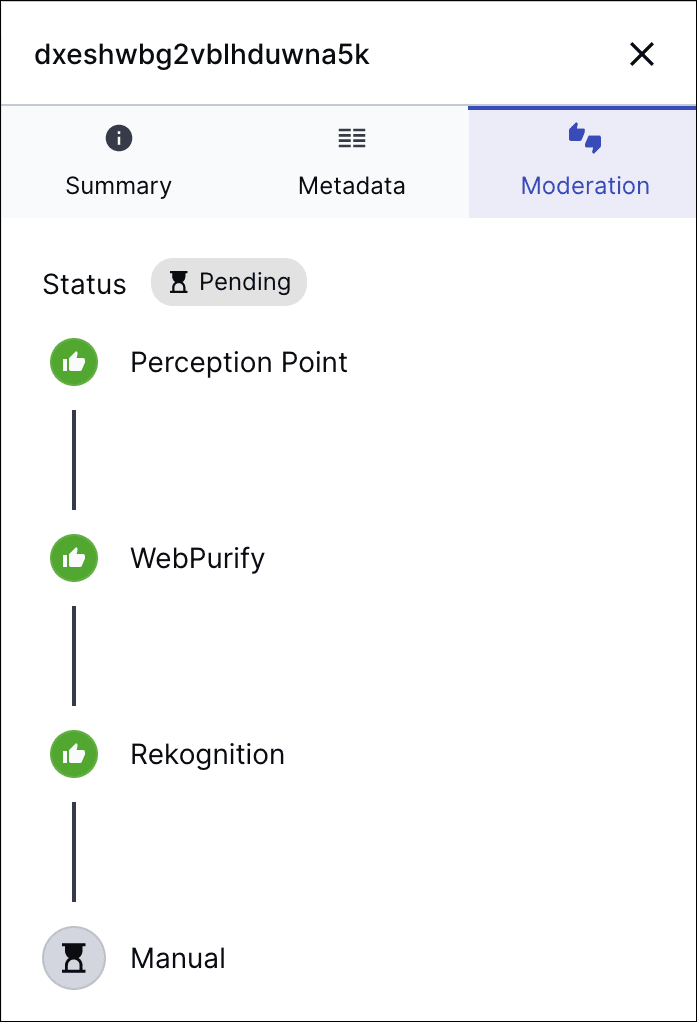Asset protection
Last updated: Mar-17-2024
You can determine which assets in your product environment are viewable by applying moderation and setting the access control mode.
Moderation allows you to reject assets that don't meet your company standards, if they, for example, are low quality or contain adult content.
The access control mode allows you to restrict the asset from being viewed outside the Media Library, except for during a specified time range.
Asset moderation
Moderating assets uploaded to Cloudinary is crucial for various reasons. It helps ensure the exclusion of inappropriate or offensive content, reject assets that don't meet your requirements (e.g., images lacking visible faces in profile pictures), and verify the quality of photos.
Assets can be marked for manual moderation, which requires a moderator from your team to accept or reject the assets, or automatic moderation. In addition, several types of moderation can be applied to assets during a single upload, including a combination of manual and automatic moderations.
Assets are marked for moderation during upload using upload presets. If your administrator set an upload preset with the desired moderation settings as your Media Library default upload preset, your newly uploaded assets will be marked for moderation by default. Or, you can apply the moderation yourself by uploading assets using the Media Library Upload Widget and selecting the Upload Preset with the desired moderation settings.
Assets can be moderated, either by human experts or by deep learning algorithms, via Cloudinary add-ons. In addition, assets can be marked for manual moderation, which means a moderator from your team approves or rejects them.
Depending on your administrator and folder permission levels, you may be able to personally review pending assets, or override decisions made by automatic moderations.
Reviewing assets manually
You can manually review assets that are uploaded to Cloudinary and marked for moderation. Users with Master admin, Media Library admin, and Technical admin roles can moderate assets. In addition, Media Library users with the Moderate asset administrator permission can moderate assets in folders that they have Can Edit or Can Manage permissions to.
You can review assets marked for:
Manual moderation: Once manual moderation is set up, assets that are uploaded are marked Pending and are displayed on the moderation page. A moderator is responsible for reviewing the pending assets, and accepting or rejecting them based on the appropriateness of the content.
Automatic moderation: From this page, you can also view all assets marked for any type of moderation, per moderation type and status. As the decisions made by automatic moderation add-ons are based on advanced algorithms, in some cases you may want to manually override the moderation decision and either approve a previously rejected image or reject an approved one. You can always manually override any decision that was made automatically. If you approve or reject an asset manually, the asset will be considered manually moderated, regardless which automatic moderation it was marked for, and it will be displayed when the Manual filter is selected.
-
Multiple moderation: You can manually override moderation decisions for assets marked for multiple moderations, as well. As each moderation is applied and resolved, the moderation status of the asset changes per moderation, along with where you'll find it on the Moderation page. You can view an asset's moderation history to monitor this progress.
For more information see Applying multiple moderations.
To review assets:
- From the Product Navigation menu, select Moderation.

- Browse the assets. Use the filters to select the moderation type and status of the assets you want to review.
To find assets marked for multiple moderations:
- While the asset is being processed, filter pending assets under the moderation type currently applied.
- If the asset's final status is rejected, the asset will be found under the moderation type that rejected it.
- If the asset's final status is accepted, the asset will be found under the last moderation type that was applied.
- If the final status was determined manually, the asset will be found under Manual moderation, regardless of whether the asset was originally marked for manual moderation.
- Decide to accept or reject them.
To view an asset's moderation history:
Once you've opened the moderation page and found the asset you're looking for either:
- Double click the asset to open the Management drill-down and select the Moderation icon. OR
- Select the asset and open the Preview Pane, then click the Moderation tab.
See how the moderation changes after each moderation is applied:
Access control modes
You can view and update an asset's access control mode directly from the Media Library.
A person can view a Restricted asset outside the Media Library only if that person has both the asset URL and an authentication token, except during an optional time-limited date range when the asset is defined as publicly accessible.
Time-limited restricted access can be useful for an image or video that's intended to be used for a special campaign or that shows a new product design, and it's imperative that the asset will not be shared outside the organization prior to an official launch date. Or conversely, it may be important to stop enabling the public to view or share an asset after the content is obsolete.
To view access control settings:
You can see whether your asset is set to Public  or restricted Restricted
or restricted Restricted  in one of the following locations:
in one of the following locations:
- The Summary tab of the Media Library Preview pane
- The Asset Management Summary tab
Uploading with access control
If you want to set the same access control settings for a set of assets you are uploading to the Media Library, a DAM administrator can apply the required access control settings in the upload preset(s) you are using as your Media Library upload preset defaults.
Alternatively, when you upload using the Media Library Upload Widget, you may be able to select an Upload Preset that has been set to upload with restricted access control settings.
Authentication tokens for access control
If you need to allow someone access to a restricted asset via a URL, outside the time range that an asset is set as public, you will need to provide that person with the relevant authentication token. You should work with your DAM administrator or developers on your team to generate and distribute the required token.
 Programmable Media
Programmable Media
 Digital Asset Management
Digital Asset Management



